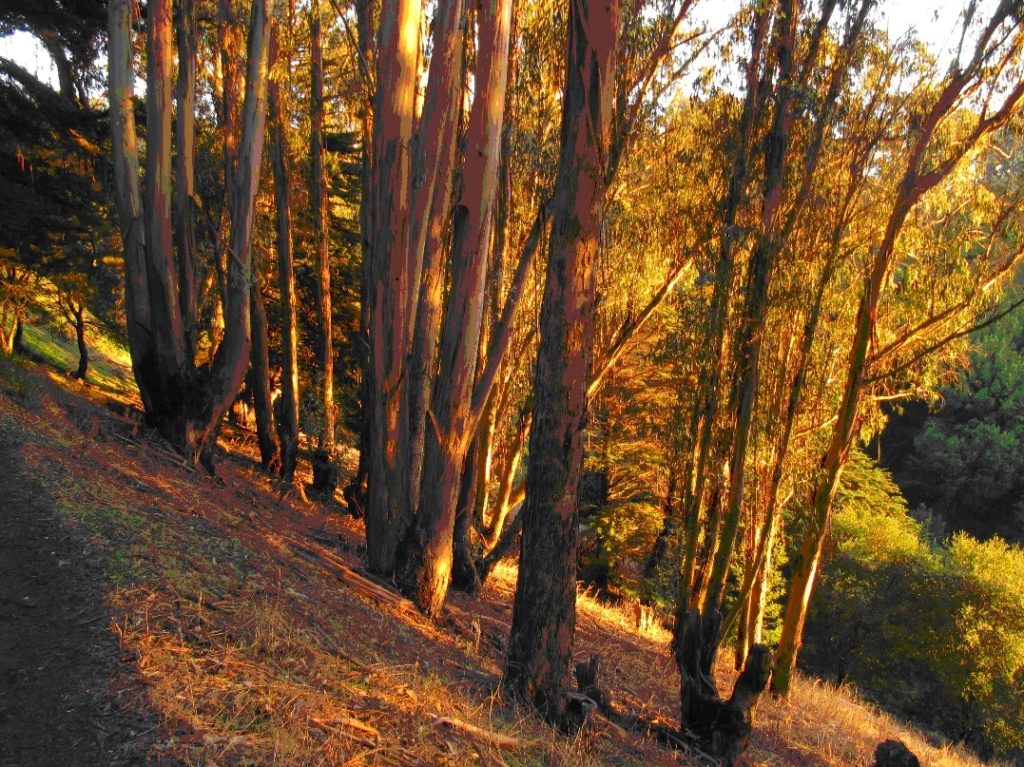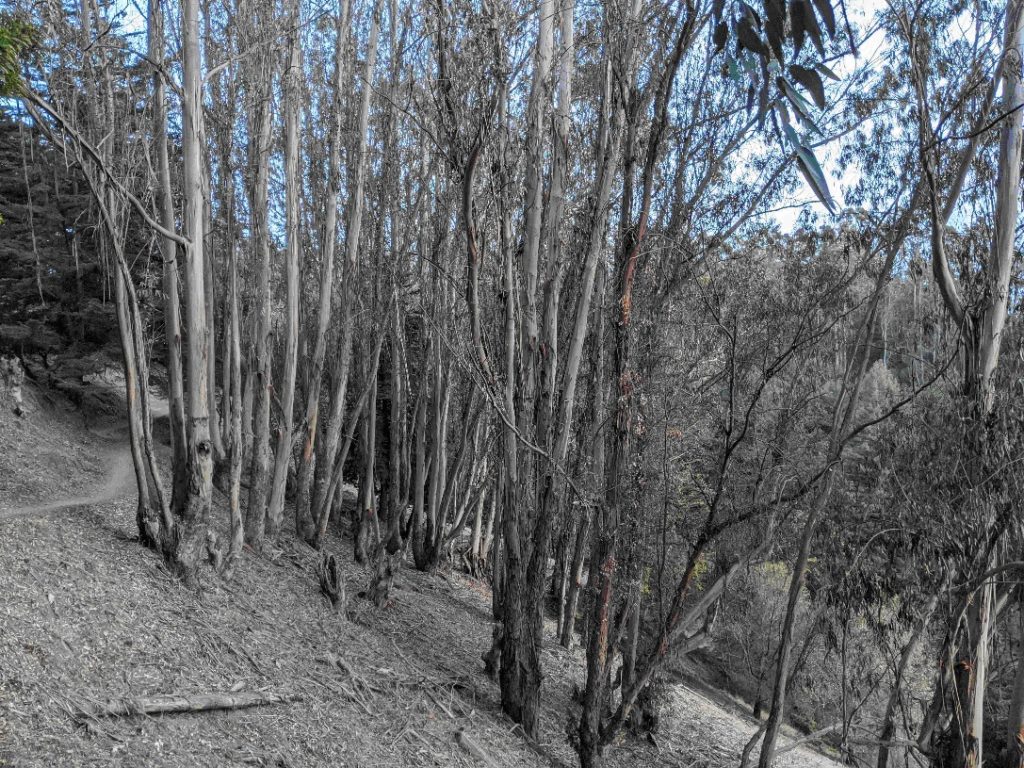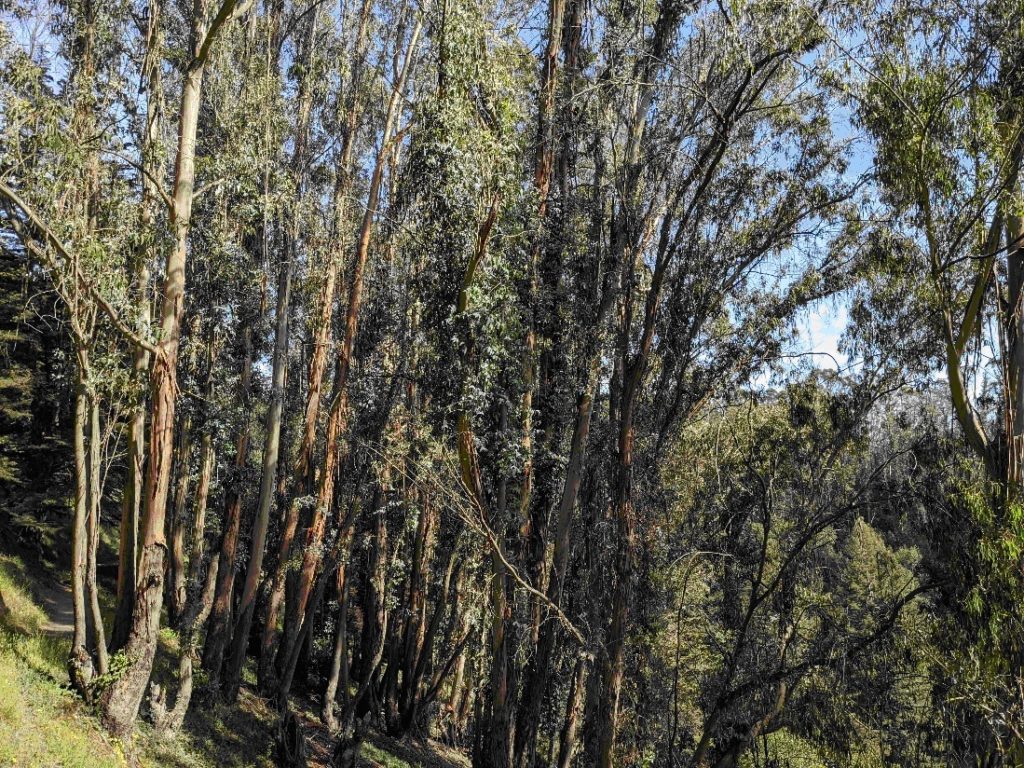By John Brega
Joaquin Miller park and the Sausal Creek watershed have experienced a lot of drama over the past two years. In 2020 the East Bay hills experienced a massive dieback of trees and shrubs starting in June. More than 20 species were seriously affected, but the most obvious were the acacias (5 varieties), eucalyptus (3 or 4 varieties), Monterey pines and Monterey cypress. The oaks faded a few months later.
There were weeks where I would have bet good money that few acacias and eucalyptus were going to survive. Then in early 2021 most of the California live oaks experienced what Matteo Garbelotto of UC Berkeley termed “bottom-up canopy thinning,” which made them look like some disease was eating them from the ground up. There was a point last April when 85% of the oaks looked like they had days or at most weeks to live.
Then suddenly, in late April and early May, the oaks bounced back, regrowing their complete canopies in an astonishing three weeks. The acacias and eucalyptus remained distressed but relatively few of them actually died, unlike the Monterey pines, which died in large numbers. Then earlier this year the acacias and eucalyptus started actively resprouting from their trunks.
Here are three pictures that show the sequence of developments from 2018 until today in a grove of eucalyptus on the Sunset trail. The first, from 2018, shows the grove in a healthy state with a full canopy.

This next one shows the same grove at its maximum decline in January of 2021.

This final one shows the same grove again just a few weeks ago, with new foliage sprouting from the trunks and (finally!) the canopy starting to fill in.

What caused the distress, and then the rebound? Many people wanted to blame the distress on drought, but from July 2020 through June 2021 Oakland got half again as much rain as in 2013, which had no such issues. There is circumstantial (not scientific) evidence that ground-level smoke may have been an important actor. In 2020 the hills spent weeks at a time bathed in smoke, sometimes so thick you couldn’t see 100 feet. In 2021 we had just three days of ground-level smoke, but in those three days many green and healthy plants, especially coyote brush, turned completely brown.
Another important development has been the loss of summer fog in the hills. We would historically get 40 to 60 days of fog between the beginning of June and the middle of August, with high temperatures between 54 and 62 degrees. That started to change in 2018, and in 2020 we got only 8 days of summer fog, with highs between 62 and 74. Even foggy day temperatures were 10 degrees warmer than they used to be. The loss of fog has been especially damaging to the Monterey pines and cypress which, like redwoods, are efficient at straining moisture from fog. Some of the larger pines used to drop an eighth of an inch of rain a day at their driplines during the summer, and supported whole ecosystems beneath their branches.
The current rebound of eucalyptus and acacia picked up speed in mid-February and became really obvious about three weeks later. Due to winter rain? We didn’t have any. The trees in our wildland parks are amazingly tenacious. It will be interesting to see what happens next.